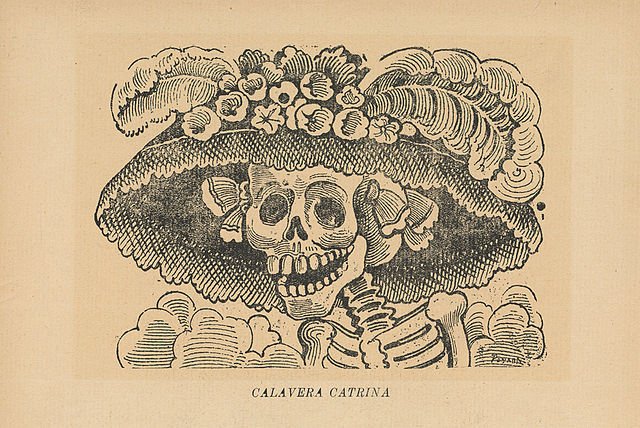Día de los Muertos, on the other hand, is not only about remembrance—it’s also a celebration of life. Families gather at gravesides, turning them into festive picnic spots where food, drinks, music, flowers, and fireworks are shared with the dead. It’s a joyful gathering that celebrates the memory of loved ones. Altars are set up in homes, adorned with flowers, photos, and offerings like food to welcome the spirits back and honor their presence.
Many offerings are sweet treats, like candy skulls, coffins, and sugar rolls called pan de muerto. The celebration also includes playful elements like toy skeletons and papel picado (colorful tissue paper cutouts of skulls and bones). These joyful touches bring a sense of sweetness and lightheartedness to the otherwise somber concept of death.
Whether through prayers on All Souls Day or the lively customs of Día de los Muertos, the past is brought into the present. Families, along with the broader faith community, gather at altars and gravesides to celebrate life in the midst of death, finding joy in sorrow. In these celebrations, memory becomes a living hope for eternal life.
Modern celebrations
Today, Día de los Muertos is celebrated in many ways, including building altars, dressing up, and sharing food. Every year, families and communities celebrate Día de los Muertos for three days. We think of this as a Mexican holiday, and yes, some of the largest, most elaborate celebrations are in Mexico. Still, El Día de Muertos is celebrated all throughout Latin American. In my mother’s hometown of La Chorrera in Panama, the procession came down in front of her home, as she lived across from the cemetery. According to Google, the states of Oaxaca and Michoacán have special traditions for the holiday. In Nejapa de Madero, Oaxaca, preparations begin a month before the celebration, including choosing stalks for altars, preparing food, and buying mezcal. In cemeteries and homes, families gather to honor and remember their loved ones who have passed. Celebrations vary by region and cultural influences. For example, in Guatemala, people make kites to reach their ancestors, while in Bolivia, processions involve the actual skulls of ancestors.
Skulls, or calaveras, sit at the center of Day of the Dead festivities. It would not be el Día de Muertos without brightly colored skulls. Everything, brightly colored and light, shows skeletons, skulls, and representations of death, like Monarch Butterfly, the carrier of souls. We see skulls made from sugar paste, wood, paper maché, or carved bone. Sugar skulls are given as gifts to family and friends to honor and celebrate the lives of the deceased. The decorations on the skulls reflect the likes and desires of the deceased. They are placed on altars and on the gravesites, and then left in the rain to melt into the Earth, mirroring the decomposition of the body after death.
The Aztecs and other Meso-American civilizations believed in death as a continuation of life, and that the dead would return to visit during a month-long ritual. They decorated their temples with skulls, kept them as trophies, and used them in rituals to symbolize death and rebirth. After Colonization, the Catholic Church often incorporated the local customs and celebrations into Catholic existing holidays. El Día de Muertos began to be celebrated on the Holy Days of All Saints Day and all Souls Day, incorporating and honoring babies and children who have died (El Dia de los Angelitos),
To welcome them, families build altars, or ofrendas, in their honor. These altars often include yellow marigolds, candles, photos of the deceased, cut tissue-paper designs, as well as food and beverages offerings, though these can vary from culture to culture.











